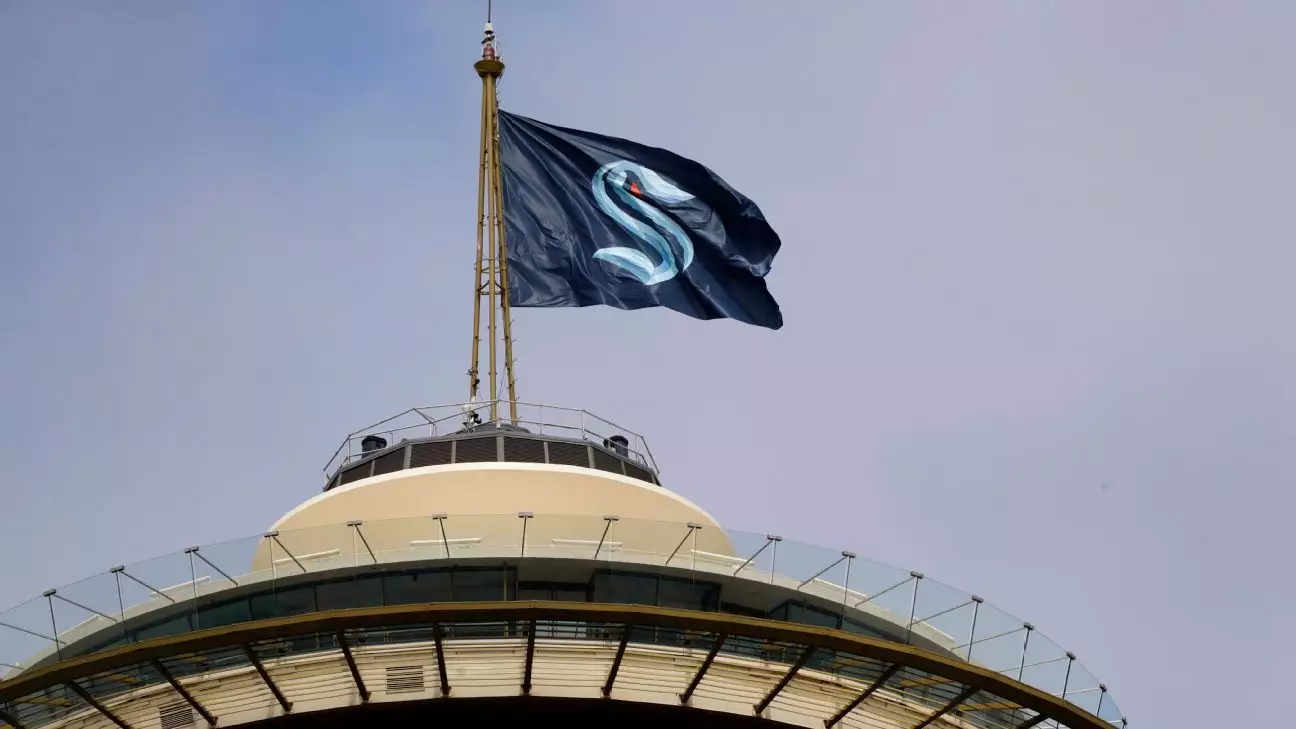In a venture aimed at fostering youth hockey and promoting outdoor adventures, Seattle Kraken forward John Hayden found himself in an unpredictable situation that highlights both the raw power of nature and the unpredictable moments that come with human curiosity. During a promotional outing in the remote wilderness of Katmai National Park, Hayden and the team’s eccentric mascot, Buoy—a blue-haired troll—almost became a part of the park’s natural spectacle, but not quite in the way they anticipated. An approaching brown bear, a symbol of Alaska’s wilderness, made a surprise appearance, turning a peaceful fishing trip into a tense encounter.
This incident underscores how easily human activities, even those carefully planned with safety measures, can be disrupted by the environment’s spontaneity. Hayden, engrossed in fly-fishing, had his serene moment interrupted as the bear charged towards the scene. Fortunately, the guide quickly intervened, removing Hayden from immediate danger, and the bear ultimately chose to retreat. The footage captured from this event reveals a compelling tableau—human curiosity side by side with wild instincts—highlighting the delicate balance required when interacting with nature’s untamed forces.
The Vicinity of the Wilderness and Humanity’s Respect
Katmai National Park is renowned for its abundant wildlife, especially its iconic brown bears. These animals are a vital part of the ecosystem, spending summers in the Brooks River area, feasting on the abundant salmon runs before settling into hibernation. While humans may be visitors, it’s evident that the animals hold firm to their natural behaviors, undeterred by our encroachment. The park’s remoteness—almost 300 miles from the nearest roads—keeps it protected, but it also reminds us of our limitations and the importance of respecting wild spaces.
The incident’s inclusion in a promotional video was unintended but offers an authentic snapshot of wilderness reality. It challenges the misconception that wildlife encounters are always predictable or controllable. It also raises questions about how humans interpret these moments—do we see them as thrilling stories, cautionary tales, or a blend of both? Hayden’s light-hearted blaming of Buoy for attracting the bear adds humor, but beneath that is a lesson about the importance of remaining humble and aware in nature’s domain.
Human Presence in the Wilderness: A Delicate Dance
What does this close call tell us about our relationship with nature? It’s a testament that despite technological advancements and safety precautions, the wilderness remains unpredictable and powerful. Hayden’s experience imparts a lesson about humility—no matter how seasoned or prepared we think we are, nature’s rules supersede ours. The fact that the bear was more interested in Buoy’s colorful look adds an amusing twist, but it also exemplifies how animals perceive unfamiliar objects with curiosity that can swiftly turn into danger if provoked or surprised.
There’s an underlying message about the importance of respecting wild animals and their habitats. Too often, human arrogance assumes mastery over nature, but the reality is far more humbling. Whether it’s a fly-fisher or a mascot, we are visitors in their world, obliged to approach with caution and reverence. This incident, while seemingly minor, reinforces the need for ongoing education and awareness when venturing into remote, wildlife-rich environments.
Ultimately, this encounter is a vivid reminder that in the wilderness, surprises are always around the corner—and it’s our responsibility to treat these moments with respect, curiosity, and humility. Nature may test us, but she also offers lessons we can carry with us in all aspects of our lives, fostering respect for the untameable forces that sustain our planet.


Leave a Reply